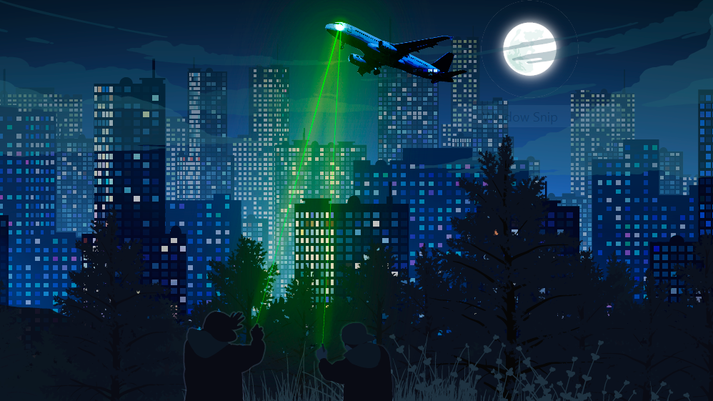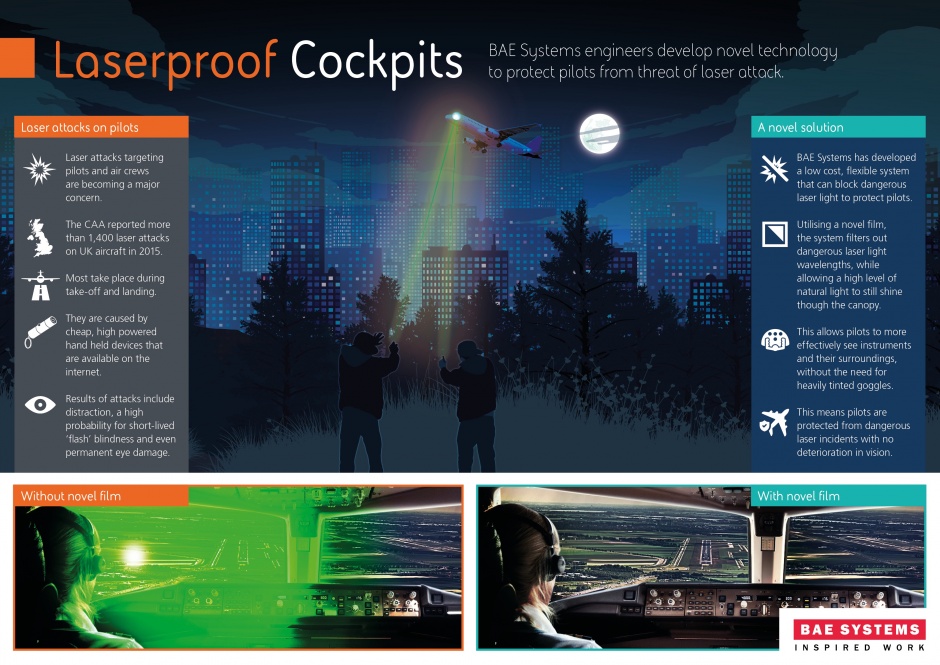
Such attacks, where criminals on the ground use powerful laser “pens” to dazzle pilots and air crews, have become a major concern in recent years. According to the Civil Aviation Authority(CAA) there were 1,258 attacks on planes landing or taking off from UK airports last year alone. The attacks can distract pilots and flight crew, obscure instruments and dials, and cause short-lived ‘flash’ blindness or even permanent eye damage. With pressure growing across industry to address the problem, UK ministers are currently considering plans to license the sale of laser pointers in an effort to clamp down on the problem.
BAE’s solution to this problem is a flexible coating which filters out laser light and can be applied to the inside of cockpits canopies or windscreens.
This film uses the principle of Holographic Interference to block and deflect incoming laser energy. By targeting just the very narrow laser frequency, the filter appears colourless and highly transparent.
BAE executive scientist Dr Leslie Laycock said that laboratory trials have demonstrated that whilst the coating lets through around 70 per cent of visible light, it filters out more than 99.9 per cent per cent of laser light.
“We have been able to achieve a visible light transmission in excess of 70%, which means that our system allows the majority of the light through while providing protection without the need for heavily tinted industrial goggles,” said Laycock. “This allows pilots to more effectively see instruments and their surroundings, whilst simultaneously blocking the dangerous laser light.”
The film - which is entirely passive - can be programmed to protect against a number of wavelengths simultaneously and ugraded at a later date by either replacing it entirely or adding on a new layer to deal with lasers that operate at different wavelengths.
Daniel Black, one of the engineers behind the technology, said that he was inspired to develop the solution whilst on holiday watching a 3D film. “Rather than watching the film I looked at the way 3D glasses form an image by blocking light. I then started to piece together a way of creating a very specific filter that is capable of blocking harmful laser light while maintaining excellent visibility.”
A BAE spokesman said that the next stage is to take the project out of the laboratory, trial it on aircraft, and ultimately commercialise it with the public sector.





Project to investigate hybrid approach to titanium manufacturing
What is this a hybrid of? Superplastic forming tends to be performed slowly as otherwise the behaviour is the hot creep that typifies hot...